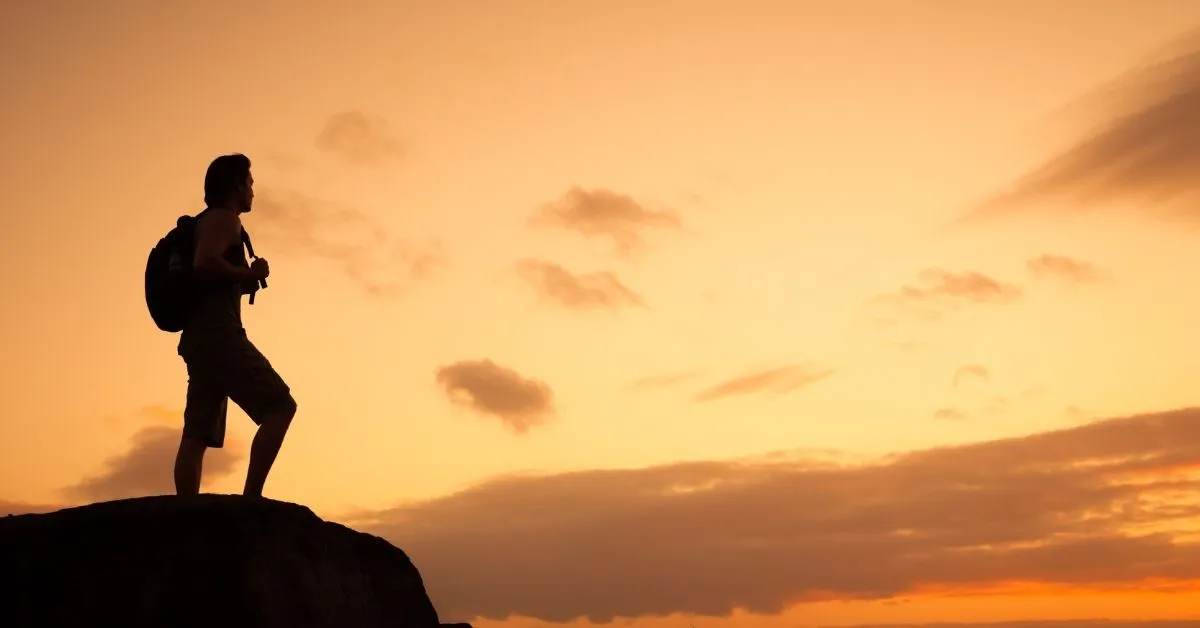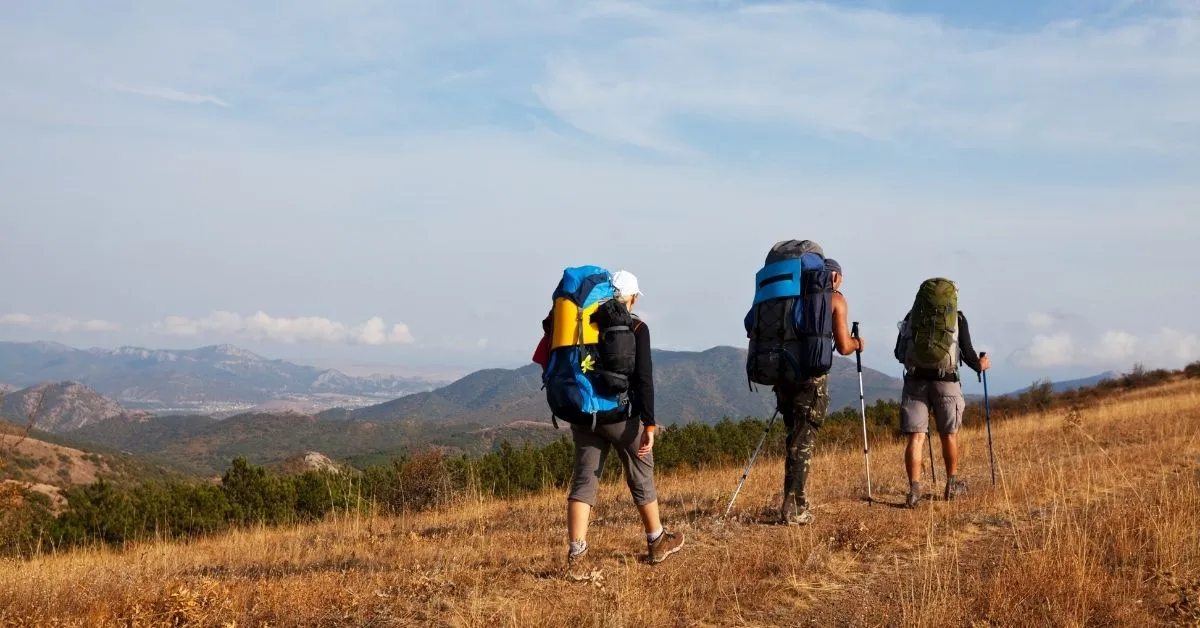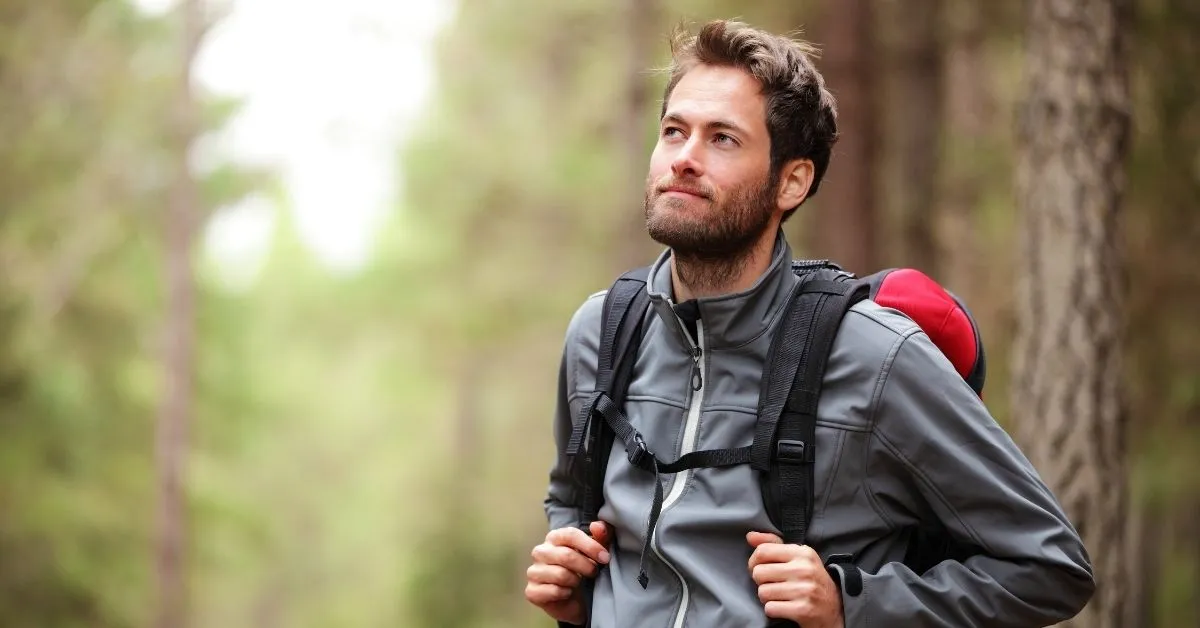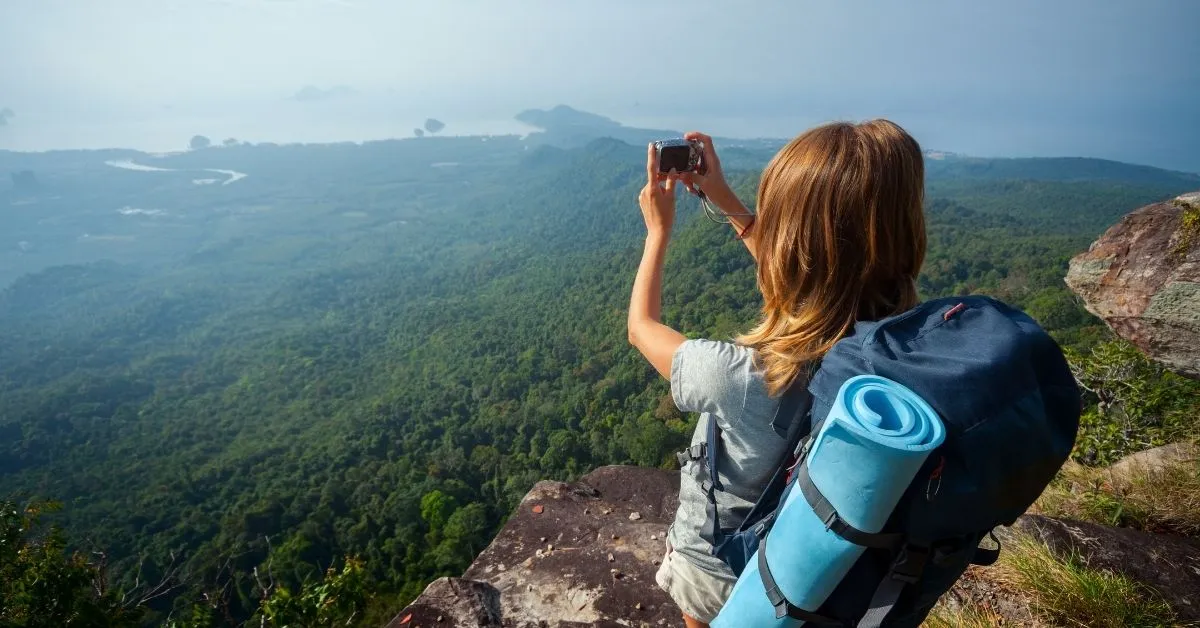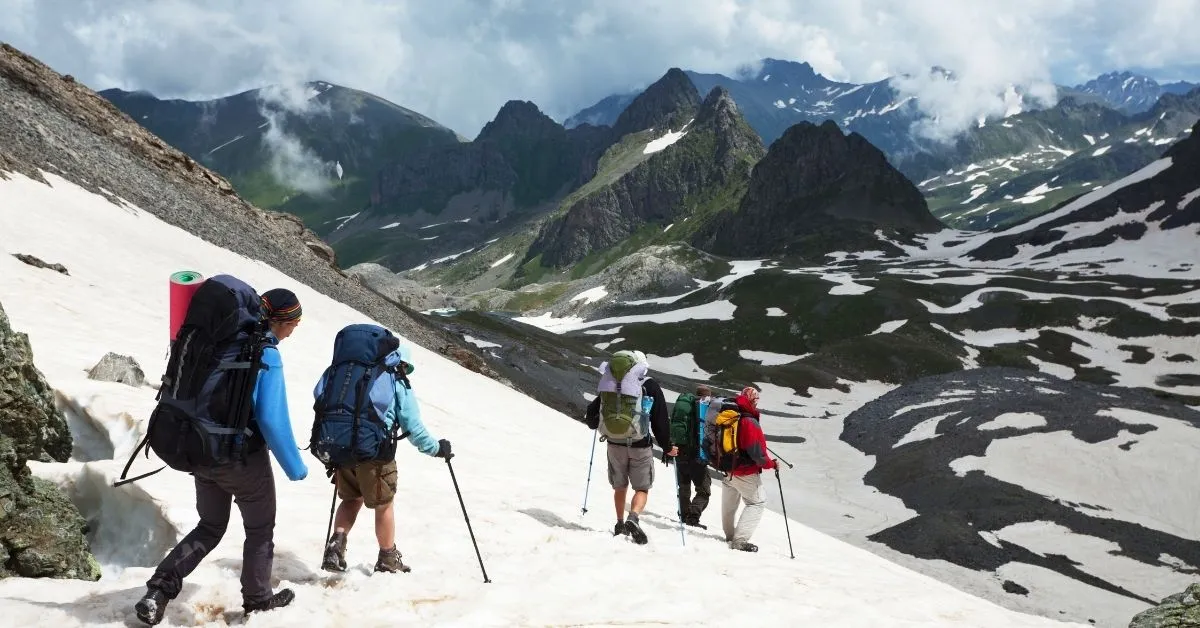Most people think of hiking and trekking as the same thing, and you will often see the two terms used as synonyms. However, there is a stark difference between hiking and trekking. Once you know the distinction, you’ll realize that a hike and trek are actually two very different activities.
Intrigued? Then read on to find out what is the difference between hiking and trekking and which is best suited to you.
Hiking VS Trekking: A Quick Comparison
The main difference between trekking and hiking is that a trek is much longer than a hike and usually more vigorous.
- A hike is essentially a long walk in nature and can last anywhere between an hour and a day. It may be along a river, through a forest, or up a mountain. A hike usually follows a marked route or footpath, but part of it can be off-trail.
- A trek is more of a journey through the wilderness that lasts over multiple days. Therefore, it involves overnight camping and much more preparation and planning than a hike. A trek is also more likely to be off-trail.
What Is Hiking?
Hiking is a casual activity that many people do as a hobby or for exercise. For example, many people will take an afternoon hike to reconnect with nature, get some fresh air, or do more steps.
A hike may last anywhere between one hour to a full day or even overnight. There are hiking trails worldwide; some are popular established routes, while others are lesser-known, local trails. Moreover, a hiking trail can be as short as 2.5km or as long as 50km.
Another trekking and hiking difference is that hikes usually start and end at the same point. Hiking trails are loops, or they lead to a summit and then back to the trailhead.
What Is Trekking?
Trekking is when someone takes an extended journey on foot from point A to point B. Trekking can be within the same country or can involve crossing borders. A trek can last two days, two weeks, or longer and range from 50km, all the way up to 20,000km.
While people may choose to trek for fun and pleasure, most trekkers decide to embark on the trip to challenge themselves or as a spiritual journey, like a pilgrimage.
Alternatively, backpackers trek as a form of transport to get from one place to another on foot while exploring the natural environment around them.
Because a trek is so long, large parts will be cross-country style, following no marked trail and involving different terrains. Furthermore, parts of the expedition will be in remote, off-grid areas, far away from towns and even roads.
Trek VS Hike: Which Is Best For You?
Now you know the difference between hiking and trekking, you can see how different the two are. Hiking trails differ in length, elevation, and difficulty, so you can always find a hike that meets your fitness level.
Suppose you are new to hiking or trekking and do not exercise regularly. In that case, I recommend starting with a short 2.5km hike that follows a footpath and is mostly flat. You can then slowly build up to longer walks with more elevation.
If you are already physically fit and active, you can start with longer hikes, around 5-10km. However, I still recommend building your walks up, both in length and in difficulty.
Treks require a lot more physical and mental stamina. Therefore, I only recommend going on a trek if you are in good physical and psychological condition.
Do not embark on a trekking trip if you have any current injuries or limitations. However, if you have a low fitness level, you can train to go on a trek, just like how people prepare to run a marathon.
So, if you’ve decided to take up hiking or trekking, here’s how you can best prepare.
How To Prepare For A Hike?
Considering your first hike will be just a couple of hours, you should be able to walk for this duration without getting out of breath or too tired. Although you can, of course, take plenty of breaks on a hike, you don’t want to stop halfway to realize then you are too exhausted to walk back.
Therefore, before you head into the woods or up a mountain, practice short walks around your neighborhood or local park. Don’t just stick to flat terrains, either. Small hills are the perfect training ground for mountain hikes. However, if there are no hills nearby, you can prepare for inclines by walking up and down the stairs.
Once you can walk for two hours without needing to stop and rest, and the stairs don’t leave you gasping for air, you are ready for your first hike!
What To Take On A Hike?
One of the most significant advantages of hiking vs trekking is that you can travel light and don’t have to carry around a tent and camping equipment. All you need for your day hike is a daypack big enough to carry water, snacks, hiking camera, and other essentials.
- Daypack – A lightweight day backpack with a hydration pack is ideal, but any rucksack will be sufficient.
- Water – The amount of water you need depends on the length of your hike. In general, half a liter per hour of hiking is enough in moderate temperatures. However, if you are hiking in scorching temperatures, you might want to increase the amount.
- Snacks – It’s also a good idea to take high-energy snacks like nuts and energy bars, even if you will only be out for a couple of hours. Hiking can be strenuous, and snacks can be a great way to maintain your energy levels. However, avoid taking salted nuts as these will increase your thirst.
- Other essentials – If you’re hiking in a climate where rain is likely, always pack a foldable rain jacket. Other essentials that are a good idea to take are sun lotion, sunglasses, and a hat.
How To Prepare For A Trek?
Before you go on a trek, you should be fit and healthy enough to walk for around 7-8 hours a day for a few days in a row. The best way to prepare for a trek is to go on regular hikes, increasing the distance and difficulty over time.
It’s also a good idea to go on an overnight hike before embarking on a multi-day trip. An overnight hike will help you know what to expect from a longer camping journey.
As well as preparing yourself physically and mentally, you’ll need to research and plan the route you will take. You’ll also have to consider the logistics of the journey, such as how you will get to your starting point and how you will return home after.
Moreover, think about your safety; have an emergency plan in place, research the nearest hospitals and towns, share your trekking route with family and friends, etc.
What To Take On A Trek?
The downside of trekking is that you need to take a lot more equipment than hiking. As trekking involves camping overnight, you’ll need to take a tent along with camping equipment, plus changes of clothes and enough food and water.
- Backpack – You’ll need a 50-60L pack with a waist belt and adjustable back support. You’ll be carrying it all day, so comfort is of the utmost importance.
- Camping equipment – For a multi-day trek, you’ll need a tent, sleeping mat, and sleeping bag. If you’re not staying at a campsite, you’ll need cooking equipment such as a camp grill and a pan, too.
- Navigation tools – As you tend to be further out in the wilderness on a trek than a hike, you might want to take a compass and map to help you stay on route.
What About Mountaineering?
You may have also heard of the term mountaineering, which is different from hiking and trekking. Mountaineering, also called mountain climbing, is an extreme sport that involves climbing to high mountainous points, such as Mount Everest.
Mountaineering is much more physically demanding than a hike and trek. It requires intense training to build physical strength and develop climbing skills. In addition, mountaineering is not done on foot and requires technical equipment such as ropes and poles to climb and abseil the mountain.
Final Thoughts
So, there you have it, there is a distinctive difference between trekking and hiking, and they require different preparation and equipment. Moreover, when deciding between hiking vs trekking, remember that your safety is the most important thing.
If you don’t feel confident to hike and trek on your own, enlist a friend to go with you. Better yet, join a hiking or trekking group where you will have the support of more experienced backpackers.

